Max designed the experience around our interests, and showed us many of the spots we ended up returning to later on in our journey to explore more in depth. He took us all around the city, getting us oriented. Great first activity in Osaka.Nell, Osaka, 2025
Table Of Contents
- Why Osaka Hits Different (Even on Your First Visit)
- Where You Should Stay in Osaka
- How to Navigate Osaka Like You Grew Up Here
- The Street Food You Can't Miss on Your First Day
- Osaka Castle Isn't Just a Photo Spot
- Day Trips From Osaka That Are Actually Worth the Extra Cost
- The Osaka Amazing Pass: Is It Worth It?
- Why the Namba Area Deserves a Full Evening
- Convenience Stores, Covered Arcades, and the Joy of Small Things
- When You Visit Osaka. Don’t Skip These Local Touches
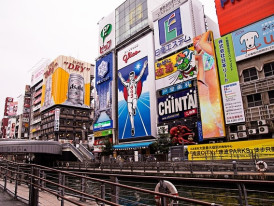
osaka, landscape, dotonbori,
.
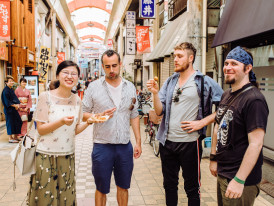
Smiling locals chatting in a takoyaki stall.
Why Osaka Hits Different (Even on Your First Visit)
Look, I won’t pretend to be neutral, I’m fiercely proud of my hometown.
I grew up on these streets, practically raised on the steam rising off sizzling takoyaki grills. But there’s a reason people leave Osaka with full bellies and fuller hearts, and why so many can’t wait to come back.
Osaka may be Japan’s third largest city, but don’t let that number fool you.
Tokyo’s got the glitz. Kyoto’s got the temples.
But Osaka? We’ve got heart. Loud, lively, deliciously unfiltered heart.
This city doesn’t put on a show. What you see is what you get.
And what you get is local cuisine made with soul, streets filled with buzzing nightlife, and a lively atmosphere that wraps around you like a warm welcome.
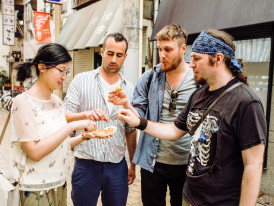
Guests and host enjoying street food.
Your first time here, you’ll notice it right away - we talk louder, laugh harder, and speak with a Kansai accent that skips the frills.
We say mokkai? (want another?) without blinking.
We argue about the best takoyaki right in front of the vendors, then hug it out over a round of cold beers and delicious food.
Step out of JR Osaka Station, and you're not just another visitor - you're my guest.
That’s how we do it here. Not with distant politeness, but with open arms, hearty meals, and conversations that start like you’re already part of the family.
One of the best ways to connect with Osaka's energy is to pause at a busy takoyaki stand - not just for the snack, but for the experience.
These stalls double as neighborhood gathering spots, where locals swap jokes with vendors and regulars banter.
Eavesdrop for a moment and you'll hear the rhythm of the city: playful, warm, unfiltered. Don’t just snap a photo.
Join the line, laugh at a joke you half-understand, and feel the Osaka spirit unfold around you, one sizzling batch at a time.
Make Your Time in Osaka Truly Yours
From quick introductions to deep dives, choose the experience that fits your pace - and let a local bring it to life.
Where You Should Stay in Osaka (And Why Location Matters)
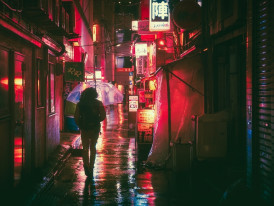
Streets near Namba Station at night Image by Masashi Wakui from Pixabay
Where you stay in Osaka makes or breaks your first visit. This isn't like some cities where everything's spread out and you need trains to get anywhere. Osaka's neighborhoods each have their own flavor, and staying in the right one means you can just roll out of bed and into the good stuff.
For your first time in Osaka, stick to either Namba or Umeda.
Namba's my personal pick. It's where Osaka shows its true colors after dark. You're right by Dotonbori (that canal with all the crazy signs), Shinsaibashi shopping arcade, and more food than you could eat in a month.
Budget places like Dormy Inn Namba or splurge spots like Swissôtel Nankai are both great here.
Umeda feels a little more polished - think upscale malls, sleek office towers, and a business-district buzz. It’s a great base for first-time visitors who like their surroundings a bit more structured and easy to make your way through.
If luxury’s your thing, the Ritz-Carlton is right here. But even more budget-friendly stays like UNIZO Osaka get rave reviews from friends who’ve wanted comfort without the splurge.
Want to live like a local? Stay in Tennoji. It’s got that real neighborhood vibe, plus Abeno Harukas (Japan’s tallest building) and solid train access.
Just don’t book way out in the suburbs to save a few yen - you’ll spend it on trains and miss the late-night magic racing for the last ride home.
Your first day in Osaka shouldn’t be spent sightseeing. It should be spent eating!
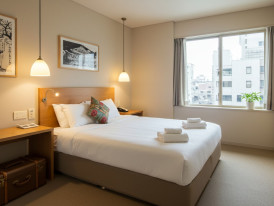
Cozy budget hotel room in Osaka
Areas near Osaka Bay have nice views and Universal Studios, but they’re a bit isolated if you’re chasing that downtown Osaka energy.
The right location means you can stumble upon random festivals, smell something amazing and follow your nose, or hear music from a bar and just wander in.
That's the real Osaka experience.
To make the most of your stay in Osaka, a vibrant area like Namba puts you right in the thick of Osaka's evening buzz.
The glowing signs and lively crowds are an experience in themselves, allowing you to easily explore the city's famed nightlife and food scene without worrying about long commutes back to your accommodation. It truly enhances your first visit when the energy of the city is just outside your door.
When you stay in Osaka, remember that even budget-friendly accommodations and traditional Japanese inns often offer comfort and efficiency. While the rooms might be compact, they are typically clean, well-organized, and provide all the essentials you need after a day of exploring.
Prioritizing location allows you to maximize your time experiencing Osaka, even if your room is simply a place to rest your head.
How to Navigate Osaka Like You Grew Up Here
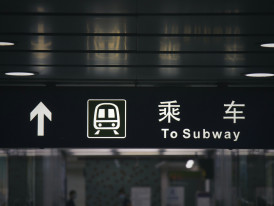
Subway signs at Shinsaibashi Station Photo by Julius Carmine on Unsplash
Alright, transportation in Osaka is dead simple once you get it, but it looks complicated at first. Here's how I explain it to my overseas friends.
First, forget taxis unless it's late at night. They're expensive, and honestly, our public transport crushes it.
When you visit Osaka for the first time, get an ICOCA card immediately. It's our rechargeable transport card that works on all trains, subways, and buses. Buy it at any station and thank me later. Just tap and go.
The subway system has 8 lines, color-coded and numbered. Way easier than Tokyo's spider web. The Midosuji Line (red) is your main north-south artery. Learn that one and you've got most tourist spots covered.
JR trains are separate from subways but use the same ICOCA card. They're perfect for reaching Osaka Castle or heading to day trips. If you've got a Japan Rail Pass, use it! JR Osaka Loop Line circles the city center and is included in your pass.
When you're lost, don't panic. Station signs are in English, and station staff almost always have someone who speaks basic English. Just point to where you want to go on a map. My local hack? Use Google Maps but double-check the exit numbers it tells you. Sometimes it'll have you walking an extra 10 minutes when another exit would've put you right there.
Walking between Namba and Shinsaibashi? Skip the subway. It's a 15-minute stroll through one of the longest shopping arcades in Japan, and you'll see more of real Osaka life that way. With these basics, you'll be navigating like you've lived here for years.
The Street Food You Can't Miss on Your First Day
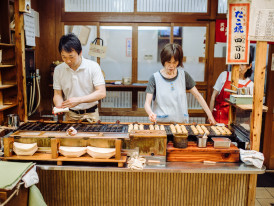
Takoyaki being cooked in street food stall
Let’s be honest. Your first day in Osaka shouldn’t be spent sightseeing. It should be spent eating. They call this place Japan’s Kitchen for a reason, and that reason is simple: great food is everywhere, and it’s ridiculously delicious.
Start with takoyaki - our ultimate street snack. These octopus balls are crispy on the outside, gooey inside, and packed with real octopus (none of those sad tourist versions).
Skip the flashy stalls with the giant mechanical octopus signs and head to Abeno Takoyaki Yamachan, where locals line up for the real deal.
Next up, okonomiyaki. Imagine a savory pancake meets an omelet, topped with dancing bonito flakes and tangy sauce. Mizuno in Dotonbori has been flipping them since 1945. There’s usually a line, but it’s absolutely worth the wait.
Then there’s kushikatsu - anything you can skewer, bread, and deep-fry. Daruma in Shinsekai is the classic spot, but honestly? I like the little joint two doors down with the red lanterns. Fewer tourists, same incredible flavor.
Experience Osaka the Way a Local Shares It With Friends
City Unscripted pairs you with a local host who’ll help you skip the guesswork and explore with confidence. No cookie-cutter tours in sight.
Osaka Castle Isn't Just a Photo Spot

Cherry blossoms around Osaka Castle
Everyone takes the same shot of Osaka Castle from across the moat. And yeah, it's pretty. But growing up here and visiting that castle probably 50 times, I've noticed things that most tourists miss on their first time here.
First things first: the castle you’re looking at is a concrete reconstruction from 1931.
The original burned down more than once.
But that doesn’t make it fake. If anything, it makes it pure Osaka. We get knocked down, then rebuild, bolder, prouder, and more stubborn every time.
Skip the inside during peak hours. Yes, there's a museum, but it gets packed. Go early or just before closing - the real magic is outside.
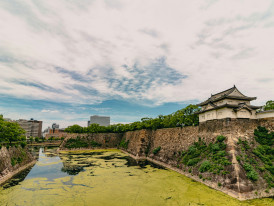
Moat view of Osaka Castle Photo by Joshua Tsu on Unsplash
In late winter, the plum grove on the west side blooms before the cherry blossoms, with mostly locals with thermoses of tea, enjoying the first signs of spring.
In fall, the ginkgo trees around the moat turn a yellow so bright, no photo does it justice.
Go see it with your own eyes.
Want to feel like a local? Grab a convenience store bento and eat it on the lawn, just like we do. The southeast corner is prime for people-watching.
See joggers circling the moat? That’s a 4.2km loop we treat like a free gym. Join in for a lap! It’s the best way to see the castle from every angle.
Osaka Castle isn't just some historic relic, it's still the heart of how we use public space in this city, whether for hanami parties, morning tai chi, or first dates.
Day Trips From Osaka That Are Actually Worth the Extra Cost
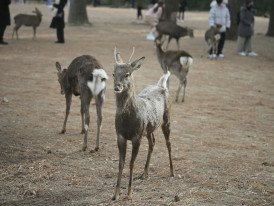
Nara deer park on a sunny day Photo by Fidel Fernando on Unsplash
Look, I get it. It's your first trip in Osaka, you're trying to squeeze in everything. And yeah, there are some killer day trips from here.
But let me save you time and money by telling you which ones are actually worth it.
Kyoto’s the obvious choice, it’s just 30 minutes from Osaka Station on the Shinkansen (bullet train).
But here’s a local tip: skip the mega-famous spots like Kiyomizu-dera and Fushimi Inari on a day trip. They’re packed.
Instead, start your morning in Arashiyama for the bamboo grove, then head to northern Higashiyama in the afternoon (think Philosopher’s Path, Ginkaku-ji).
It’s calmer, prettier, and way less stressful.
Nara is my personal favorite day trip - 45 minutes by train and you've got sacred deer bowing for crackers, Japan's oldest wooden buildings, and the massive Buddha at Todai-ji.
Go on a weekday if possible.
Kobe gets overlooked, but it's only 20 minutes away. Skip the tourist spots and head straight to Kitano area for the historical foreign houses, then treat yourself to actual Kobe beef for lunch (budget at least ¥5,000 per person, but it's life-changing).
Here’s what to skip: Universal Studios Japan. Unless you’re a die-hard Harry Potter fan chasing the Wizarding World, or you’ve dreamed of riding through Jurassic Park since you were a kid.
Otherwise, the lines are brutal, and it’ll eat up your whole day. Also skip Himeji Castle if you're short on time. Sure, it's Japan’s most complete original castle, but it’s 1.5 hours each way - and you've already got Osaka Castle right here.
Save the travel time for something that makes your dream trip feel less like a schedule and more like an adventure..
The real value of staying in Osaka is using it as your home base for these quick hits to nearby cities, without having to repack your suitcase every night.

Kyoto alley with old teahouses Photo by Ryutaro Tsukata Pexels
Even on a focused day trip from Osaka, you can find quiet, picturesque corners of Kyoto, like these historic alleys.
While the major temples draw crowds, wandering through these narrow streets, with their traditional teahouses and charming storefronts, offers a more intimate glimpse into old Japan.
It's a peaceful contrast to Osaka's lively atmosphere.

Train departure board at Shin Osaka Station Image by NoName_13 from Pixabay
Shin Osaka Station acts as your gateway to these incredible day trips. The efficiency of Japan's rail system means you can easily plan spontaneous excursions to Kyoto, Nara, or Kobe.
Seeing the departure board light up with various destinations is a reminder of how well-connected Osaka is, making it the perfect hub for exploring the Kansai region.
The Osaka Amazing Pass: Is It Worth It?
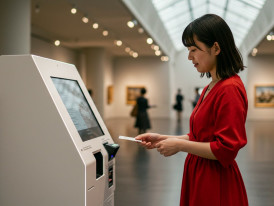
User scanning the pass at an art museum
Straight talk? The Amazing Pass confuses a lot of first-timers. It's either an incredible deal or a complete waste of money, depending on how you use it.
The 1-day pass (¥2,800) or 2-day pass (¥3,600) includes unlimited subway/bus rides plus free entry to 35+ attractions.
Sounds great, right?
Here's the catch - you need to hit at least 3-4 attractions in a day to make it worthwhile. And you
need to actually want to see those specific places.
See Osaka’s Icons Without Feeling Like a Tourist
Explore famous sights with a local host who brings each one to life through stories, shortcuts, and unexpected stops along the way.
For your first visit I recommend the 1-day pass if you plan a power day of sightseeing. Use it for:
- Osaka Castle (inside museum)
- The Umeda Sky Building observatory
- A river cruise in Dotonbori
- HEP FIVE Ferris wheel
- Unlimited transport between them all
That combo alone saves you about ¥3,500 versus paying separately.
Don't bother with the pass if:
- You're a slow traveler who does 1-2 things per day
- You're mostly focused on shopping and eating
- Your hotel isn't near a subway station
The biggest mistake tourists make is buying the pass then feeling pressured to race between attractions to "get their money's worth."
That's not experiencing Osaka, that's just checking boxes.
If you decide against the Amazing Pass, just use your ICOCA card for pay-as-you-go travel. Many attractions offer discounts if you show a foreign passport anyway.
The Amazing Pass works best for efficient travelers who want to see the mainstream highlights without overthinking each admission fee.
More than 26,268 5-star reviews and counting
26,268+ 5-Star Reviews and Counting
Trusted and recommended by travelers worldwide.
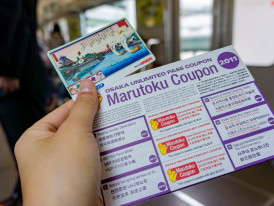
Close-up of Amazing Pass Photo by Shutterstock
The breathtaking view of the city skyline from an observation deck, often included with the Osaka Amazing Pass, is a prime example of the value it offers.
It's not just about saving money, but also gaining access to iconic cityscapes that provide a memorable perspective of Osaka.
For a first visit, seeing the entire city spread out before you from above can be an inspiring moment, cementing your appreciation for this vibrant metropolis.
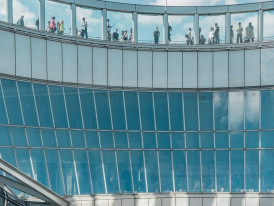
View from observation deck included in pass Image by
Why the Namba Area Deserves a Full Evening
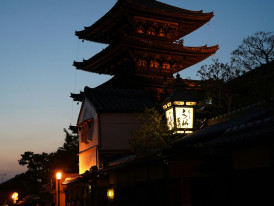
Namba Yasaka Shrine lit at dusk Photo by Shpëtim Ujkani on Unsplash
If you're only giving Namba a quick afternoon, you're doing your Osaka visit wrong, this neighborhood needs a full evening, minimum.
Start around 5pm at Kuromon Market before the stalls close. Grab a grilled scallop or seafood skewer—this place has been feeding Osaka since 1902.
As the sun sets, stroll to Hozenji Yokocho, a narrow, stone-paved alley that feels frozen in time. Find the moss-covered Hozenji Temple, splash water on the statue like locals do, and make a quiet wish.
Next, head to Dotonbori, where the neon lights flip on and the energy surges.
Sure, it’s one of Osaka’s most popular attractions, but even locals can’t resist the giant crab signs and the Glico running man. Get your photo, then slip into the side streets. This is where the hidden gems live.
For dinner, follow the locals. Ichiran Ramen is a favorite: solo booths, no small talk, just rich tonkotsu broth and noodles. Great for travelers craving a focused Japanese food experience.
Wrap up the night in America-mura (American Village) - the epicenter of Osaka youth culture. Expect street fashion, indie bars, and some of the best people-watching in the city.
Cap the night at a tachinomi (standing bar). Namba has dozens of these tiny spots where you can get a glass of sake and chat with locals who'll be way more talkative after a drink or two.
The true spirit of Namba often comes alive in its informal standing bars, or tachinomi. Here, you'll find locals unwinding after work, sharing laughs and drinks in a relaxed atmosphere.
It's a unique way to experience Osaka's approachable and friendly nightlife, often leading to unexpected conversations and genuine connections.
Namba at night captures the soul of downtown Osaka: loud, colorful, and completely unpretentious. It's the perfect antidote to those perfectly preserved historic districts in other Japanese cities.
As dusk settles over Namba, the Yasaka Shrine offers a peaceful escape from the surrounding urban energy. Its unique lion-head stage, glowing softly in the twilight, becomes even more striking. This moment provides a beautiful transition from the lively day to the vibrant night that Namba is renowned for.
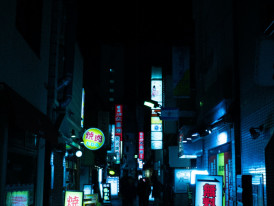
Neon-lit side street off Dotonbori Photo by Him Chong on Unsplash
Beyond the famous main thoroughfares of Dotonbori, Namba's neon-lit side streets will reveal a labyrinth of smaller eateries and unique shops.
These hidden alleys offer a more intimate and often more personal glimpse into the city's culinary and entertainment scene, inviting you to explore and find your own favorite spots away from the biggest crowds.
Convenience Stores, Covered Arcades, and the Joy of Small Things
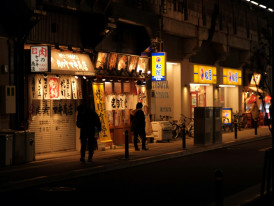
Lawson at midnight with lone shopper Photo by Mak on Unsplash
On your first visit to Osaka, don’t just chase the big attractions. The real magic lives in the everyday spots we locals rely on—where life’s unfiltered, loud, and delicious.
Our convenience stores (konbini) aren't just places to grab a soda.
They're cultural institutions. At 7-Eleven, Family Mart, or Lawson, you can:
- Get good coffee for ¥100
- Eat onigiri (rice balls) that put some restaurant food to shame
- Buy concert tickets
- Use clean bathrooms
- Pay bills (okay, you won't need that as a tourist)
My late-night move? Egg sandwich from Lawson and a Strong Zero drink. Costs about ¥400 total and tastes like Osaka midnight freedom.
Stepping into a Lawson, especially late at night, feels like a peek behind the curtain of Osaka life. You might find a lone salaryman grabbing a snack after a long day, or students studying for exams.
The sheer variety of ready-to-eat meals, from bento boxes to hot fried chicken, is always a pleasant surprise for first-timers. It's a place where efficiency meets convenience, and the humble egg sandwich truly shines.
See Osaka Through Someone Who Actually Lives It
Skip the scripts. Shop, snack and explore Osaka with a host who builds the day around what you’re curious to discover.
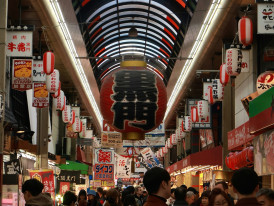
Shoppers in a covered arcade Photo by Daniel Pelaez Duque on Unsplash
Then there's our covered shopping arcades. Tenjinbashisuji is the longest in Japan at 2.6km. Seniors play gateball in the morning, moms shop for dinner in the afternoon, and at night, the tiny bars hidden inside come alive.
Just walking through these arcades gives you a cross-section of Osaka life and saves you a trip to shopping malls.
And don’t overlook our vending machines! They’re everywhere, stocked with everything from umbrellas and face masks to canned hot coffee.
In summer, keep an eye out for the ones with blue labels - they sell icy drinks that are a lifesaver in Osaka’s humidity.
Want to experience peak local culture? Find a 100-yen shop (Daiso is the big chain) and marvel at what Japanese design can do at dollar-store prices. The stationery section alone will blow your mind.
These small everyday touchpoints are what make your first visit in Osaka different from other cities - the joy of discovering how regular life works here.
The covered arcades aren’t just walkways; they are the arteries of local commerce and community. The atmosphere changes from morning to night – in the daytime, you hear the cheerful greetings of shopkeepers and the chatter of shoppers hunting for bargains.
As evening approaches, the aroma of dinner wafts from small eateries, and the arcades turn into vibrant social hubs where the day's worries melt away. All within walking distance from the most beautiful traditional Japanese inns.
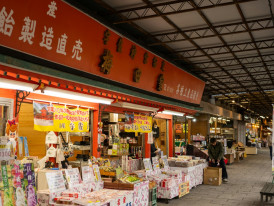
Morning market in Osaka Prefecture Photo by Kouji Tsuru on Unsplash
When You Visit Osaka Don’t Skip These Local Touches
Alright, final thoughts. These are the local experiences that tourists often miss but that show you the real heart of my city.
First, catch a baseball game at Koshien Stadium. Even if you don't like baseball, watching the Hanshin Tigers fans is an experience. They have choreographed chants for EVERY player and release balloons in the 7th inning. Tickets are easy to get except for weekend games against the Giants.
Morning markets aren't just for Instagram. The Karahori Sunday Market is where locals actually shop, haggling over fresh vegetables and homemade pickles. Strike up conversations with vendors—they love showing off their produce to visitors.
When you visit Osaka, getting to a local market like Karahori on a Sunday offers a sensory feast and a genuine glimpse into daily life.
The lively atmosphere, the fresh scents of seasonal produce, and the friendly banter between vendors and shoppers truly immerse you in the local culture. It’s a great way to pick up unique souvenirs or simply observe the natural feel of the city.
Take a breather in Nakanoshima Park, right between the two rivers that split downtown Osaka. Businesspeople eat lunch here, couples have picnics, and there's often free music on weekends. It's where Osakans go when they need a green escape.
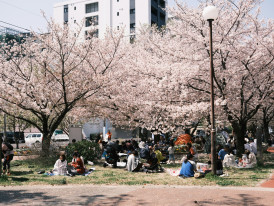
People lounging in a city park Photo by Nichika Sakurai on Unsplash
Even if you primarily stay in Osaka for its bustling city life, carving out time for a relaxing afternoon in Nakanoshima Park can be incredibly refreshing.
You’ll see locals unwinding, enjoying the green spaces amidst the urban landscape, and it’s a perfect spot to pause and reflect on your experiences. It’s a reminder that even in a vibrant metropolis, there’s always room for calm and community.
Want to experience local bath culture? Skip the tourist onsen (Japanese natural hot spring bath) and hit up an ordinary neighborhood sento (public bath) like Tamatsukuri Onsen.
Pay your ¥500, strip down with the locals, and soak away your travel fatigue. Just follow what everyone else does if you're nervous.
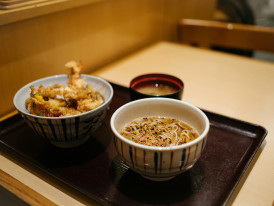
Bowl of local Japanese cuisine Photo by bady abbas on Unsplash
Finally, find a small okonomiyaki place where you cook at your own table. Not the famous chains, but the mom-and-pop spots with handwritten menus.
Tell them it's your first time, and watch how quickly they adopt you. That's the real Osaka magic - making you feel like you belong here, even if you're just passing through.
These Osaka experiences might not make the top 10 lists for fun things to do in Osaka, but they're what make this city stick with you long after you've left.
First Time in Osaka? Let’s Make It Unforgettable
SEE OSAKA EXPERIENCESMake Your First Day in Osaka One to Remember
You bring the curiosity. We’ll match you with a host who knows the city and how to tailor it to you. No scripts, just real Osaka.
Got Questions About Osaka? Ask Someone Who Actually Lives There
Chat with a local host who can help you shape your perfect first trip. No pressure, no scripts, just honest insight.









